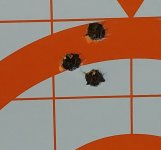I recently acquired a Remington 788 in 243. You all realize they have a reputation as really good shooters. My first three shots with it were from a pretty solid rest (a Caldwell 7 rest set up on top of a portable shooting bench) at 100 yards with the no name fixed 4x scope that came on it. I was shooting the cheapest ammo the gun store had (PPU Partisan 100gr). The first three shots grouped under an inch. The groups opened up as the barrel warmed up, and I messed around with it out to 2 and 300 yards, so I haven't repeated it yet, but I feel the group shows its potential.
I'm going to put a Timney trigger in it and get a different scope for sure, and try a couple different ammos. My real question is if bedding the action and floating the barrel is a near guarantee to improve accuracy. I hear some rifles shoot better with some upward pressure on the barrel from the forend, and I certainly don't want to risk screwing it up. I of course won't do any of that before I do the trigger, mount a new scope, and try some other ammo. I'm seeking input to see if anyone has ever regretted bedding and floating. Thanks in advance.
I'm going to put a Timney trigger in it and get a different scope for sure, and try a couple different ammos. My real question is if bedding the action and floating the barrel is a near guarantee to improve accuracy. I hear some rifles shoot better with some upward pressure on the barrel from the forend, and I certainly don't want to risk screwing it up. I of course won't do any of that before I do the trigger, mount a new scope, and try some other ammo. I'm seeking input to see if anyone has ever regretted bedding and floating. Thanks in advance.
Attachments
Last edited:

